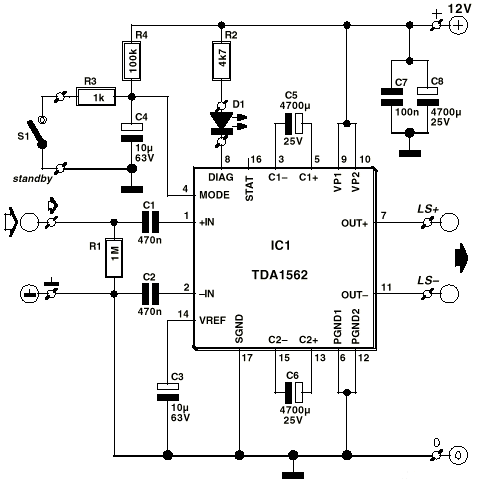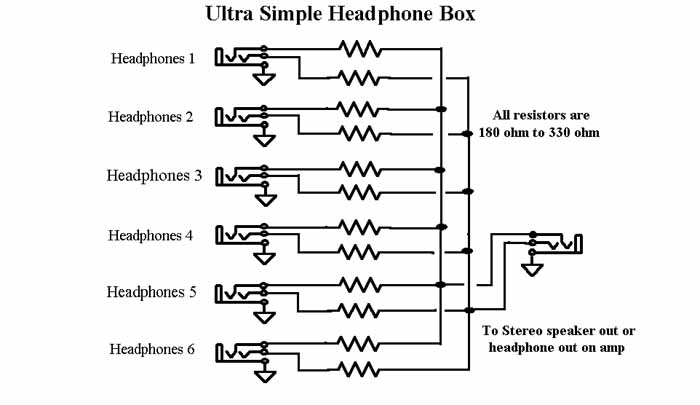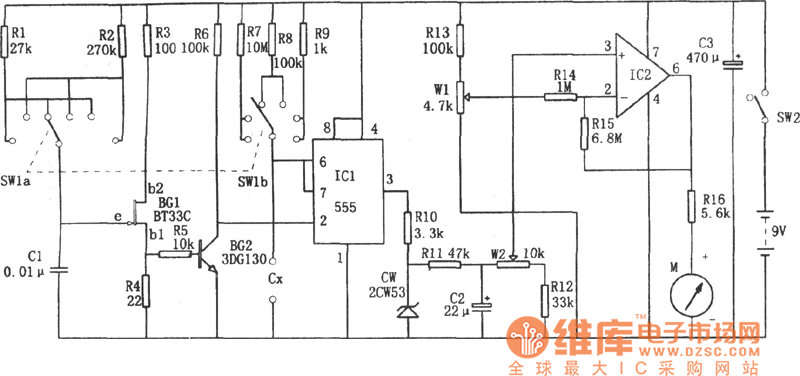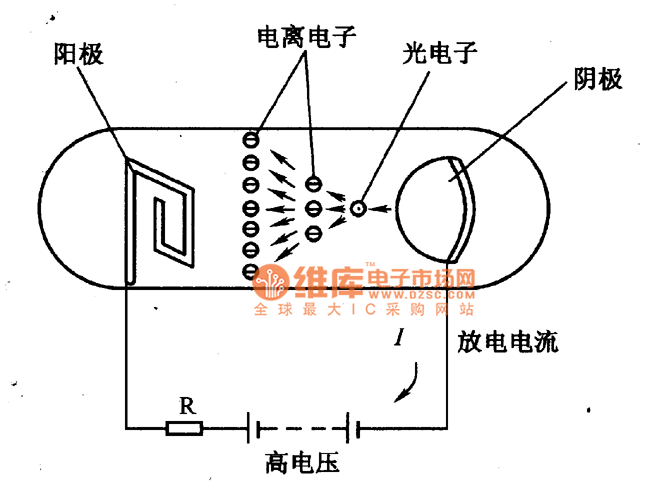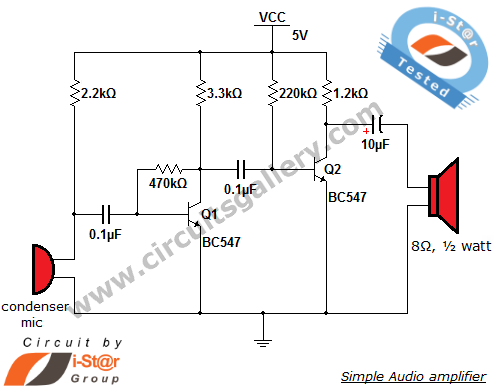
CD4541 circuit diagram of Ni-Cd battery is automatically charged
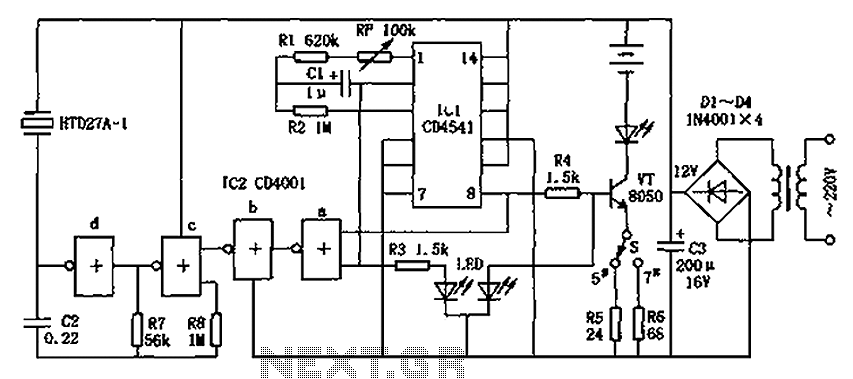
The CD4001/CD4541 nickel-cadmium battery automatic charger circuit is illustrated in the figure. This circuit is designed for charging up to seven rechargeable nickel-cadmium batteries. It features automatic charging with constant current characteristics. Once powered, the circuit activates an internal oscillator that counts until a predetermined limit is reached. At this point, the output level of pin 8 on IC1 is inverted, halting the counting process. When the count reaches ten, the output transitions high, and upon expiration, the output at pin 8 flips, allowing the counting to resume, thus creating a cyclic operation.
The CD4001/CD4541 charger circuit operates by utilizing a combination of digital logic and analog control to effectively manage the charging process for nickel-cadmium batteries. The circuit employs the CD4001 NAND gate IC and the CD4541 binary counter to provide a reliable method for automatic battery charging.
The charging sequence begins when the circuit is powered on. The internal oscillator within the CD4541 initiates a counting process, which is crucial for determining the charging duration. The counter increments until it reaches a predefined threshold, which corresponds to the maximum charge time needed for the batteries. Once this threshold is reached, the output at pin 8 of the CD4541 changes state. This output is used to control the charging current, ensuring that the batteries are charged safely and efficiently.
The design incorporates feedback mechanisms to monitor the charging process. The transition of the output at pin 8 serves as a trigger for the charging current to be cut off, preventing overcharging, which is a common issue with nickel-cadmium batteries. The circuit then resets, allowing the counting process to commence again, thus ensuring continuous operation without manual intervention.
This automatic charger circuit is particularly useful in applications where multiple nickel-cadmium batteries are used, as it simplifies the charging process and enhances battery life through careful management of the charging cycle. The use of standard ICs like the CD4001 and CD4541 makes this circuit both cost-effective and easy to implement in various electronic projects. As shown in Figure is CD4001/CD4541 nickel-cadmium battery automatic charger circuit. This circuit is designed for the 5th, on the 7th rechargeable nickel-cadmium batteries are designed with automatic charging, constant current charging characteristics. Circuit is shown. After power circuit starts to work, the internal oscillator counter counts until the count after the expiration, IC1 8-pin output level is inverted and stops counting. Such as the 10 foot M termination high, after the expiration of the 8-pin flip, then count, then flipped over so the cycle.
The CD4001/CD4541 charger circuit operates by utilizing a combination of digital logic and analog control to effectively manage the charging process for nickel-cadmium batteries. The circuit employs the CD4001 NAND gate IC and the CD4541 binary counter to provide a reliable method for automatic battery charging.
The charging sequence begins when the circuit is powered on. The internal oscillator within the CD4541 initiates a counting process, which is crucial for determining the charging duration. The counter increments until it reaches a predefined threshold, which corresponds to the maximum charge time needed for the batteries. Once this threshold is reached, the output at pin 8 of the CD4541 changes state. This output is used to control the charging current, ensuring that the batteries are charged safely and efficiently.
The design incorporates feedback mechanisms to monitor the charging process. The transition of the output at pin 8 serves as a trigger for the charging current to be cut off, preventing overcharging, which is a common issue with nickel-cadmium batteries. The circuit then resets, allowing the counting process to commence again, thus ensuring continuous operation without manual intervention.
This automatic charger circuit is particularly useful in applications where multiple nickel-cadmium batteries are used, as it simplifies the charging process and enhances battery life through careful management of the charging cycle. The use of standard ICs like the CD4001 and CD4541 makes this circuit both cost-effective and easy to implement in various electronic projects. As shown in Figure is CD4001/CD4541 nickel-cadmium battery automatic charger circuit. This circuit is designed for the 5th, on the 7th rechargeable nickel-cadmium batteries are designed with automatic charging, constant current charging characteristics. Circuit is shown. After power circuit starts to work, the internal oscillator counter counts until the count after the expiration, IC1 8-pin output level is inverted and stops counting. Such as the 10 foot M termination high, after the expiration of the 8-pin flip, then count, then flipped over so the cycle.
